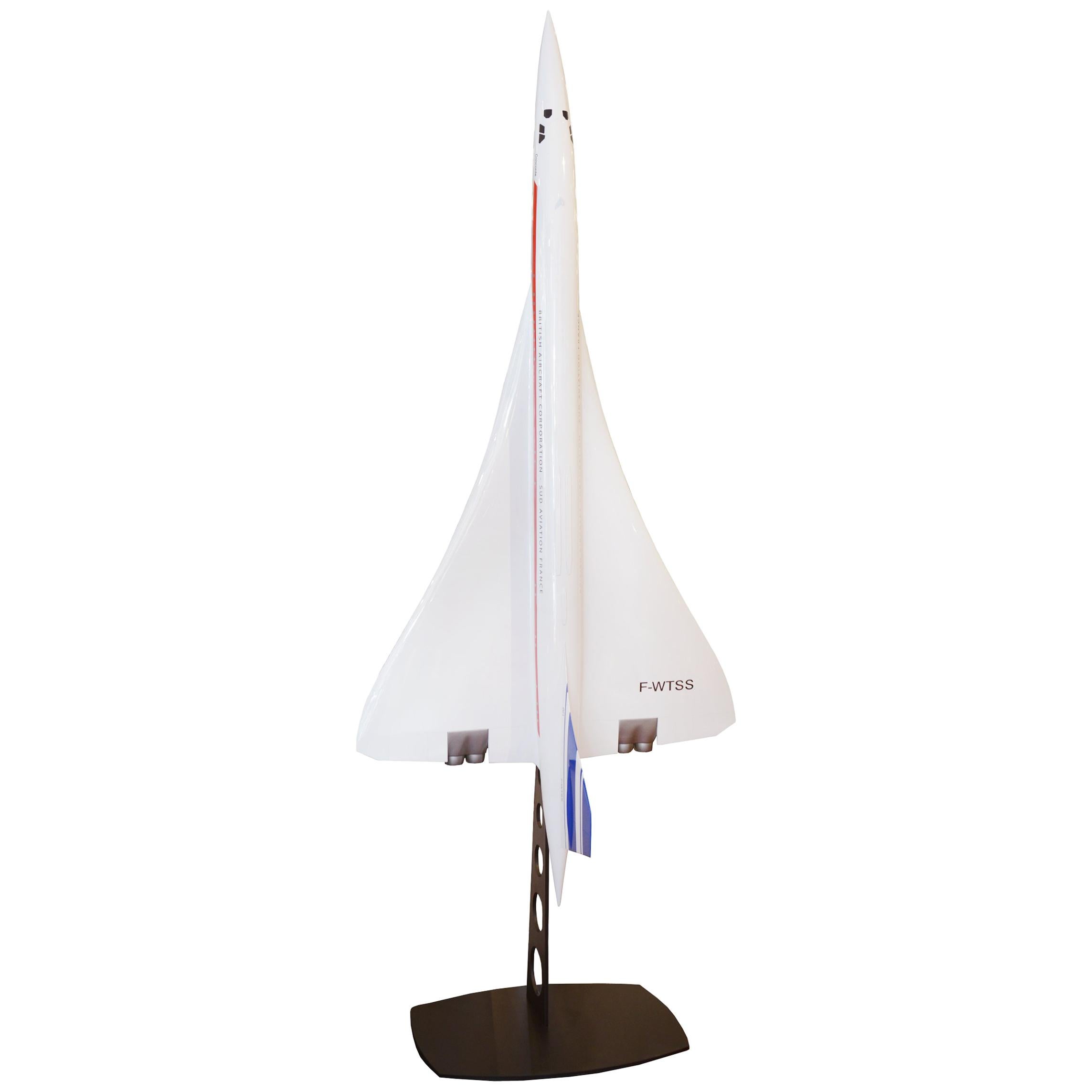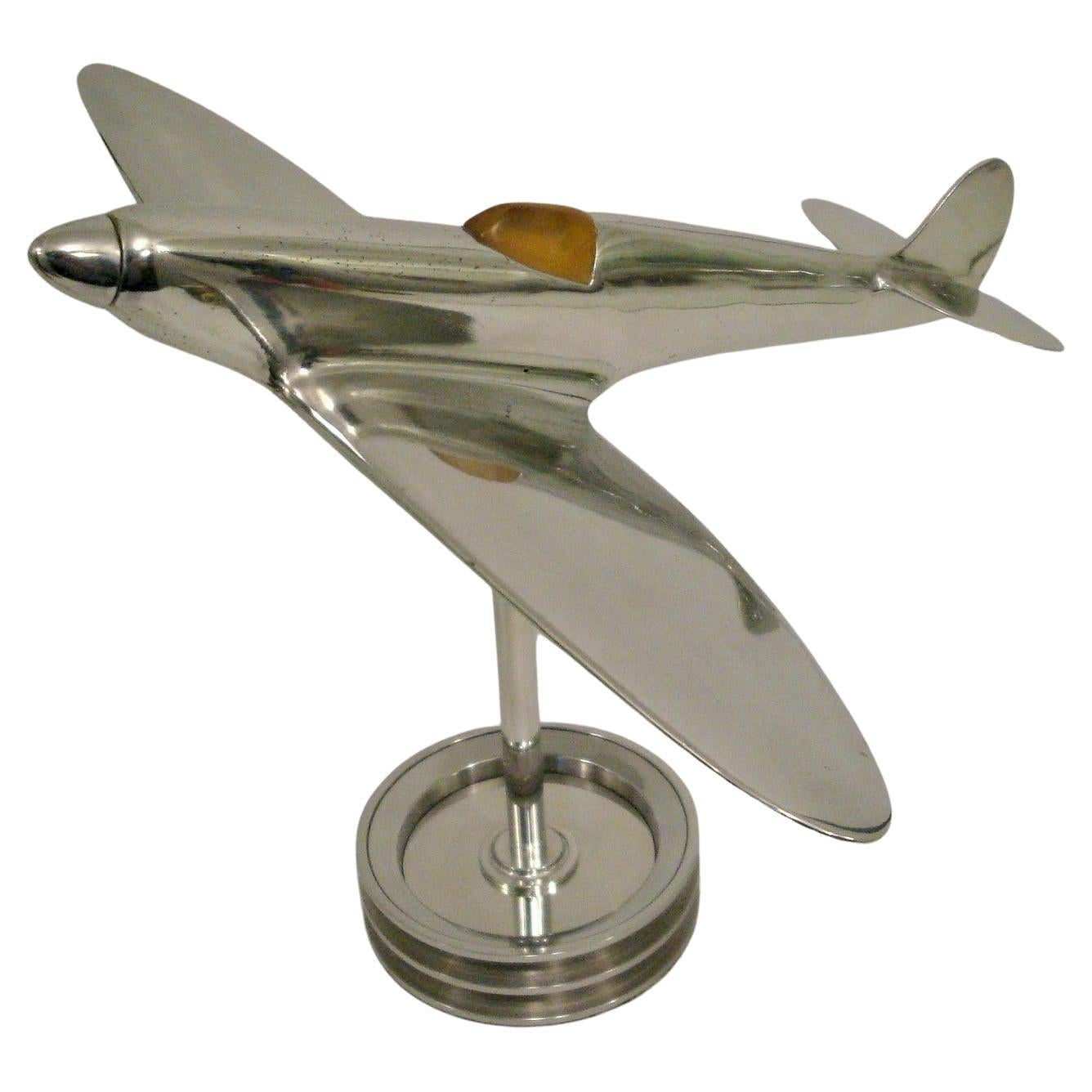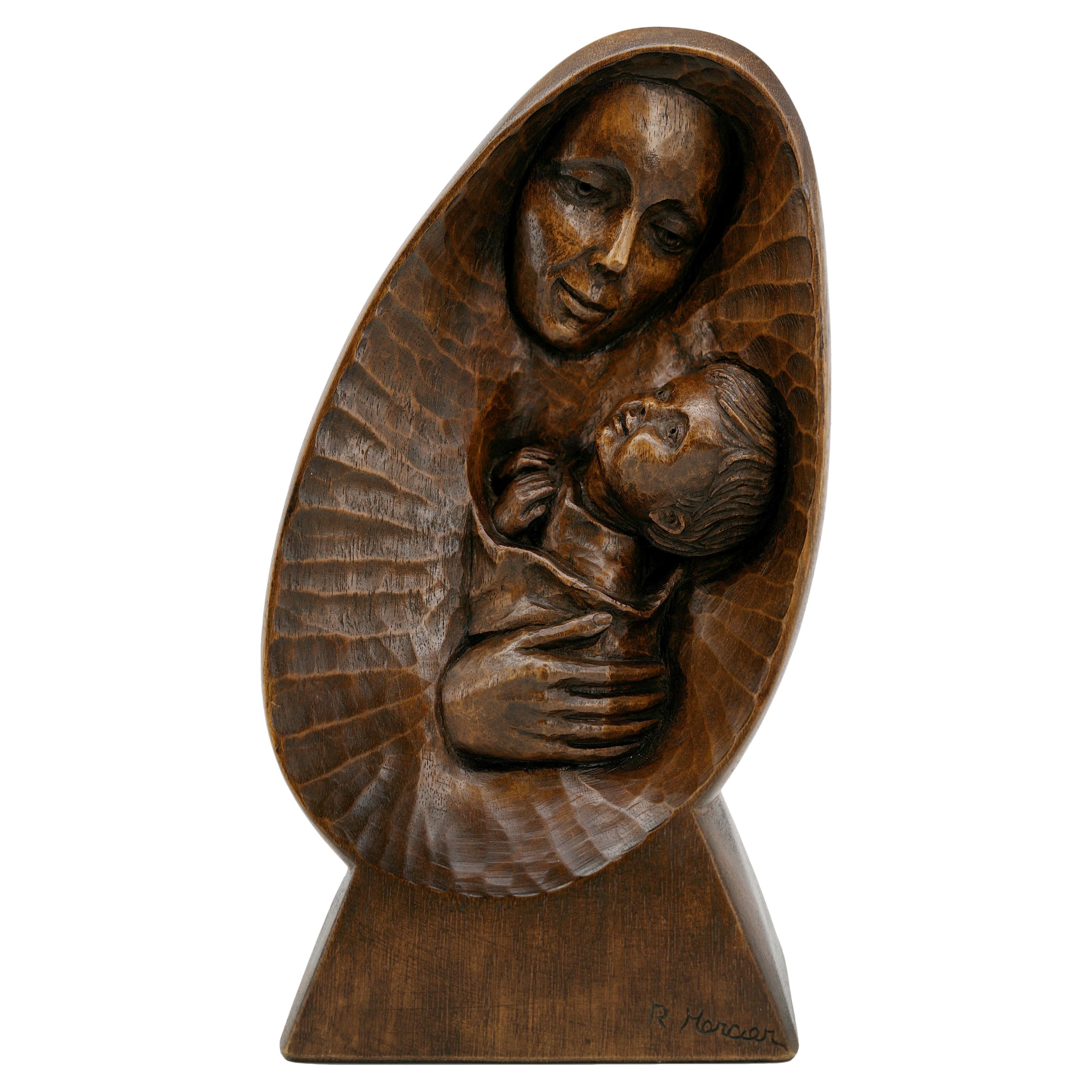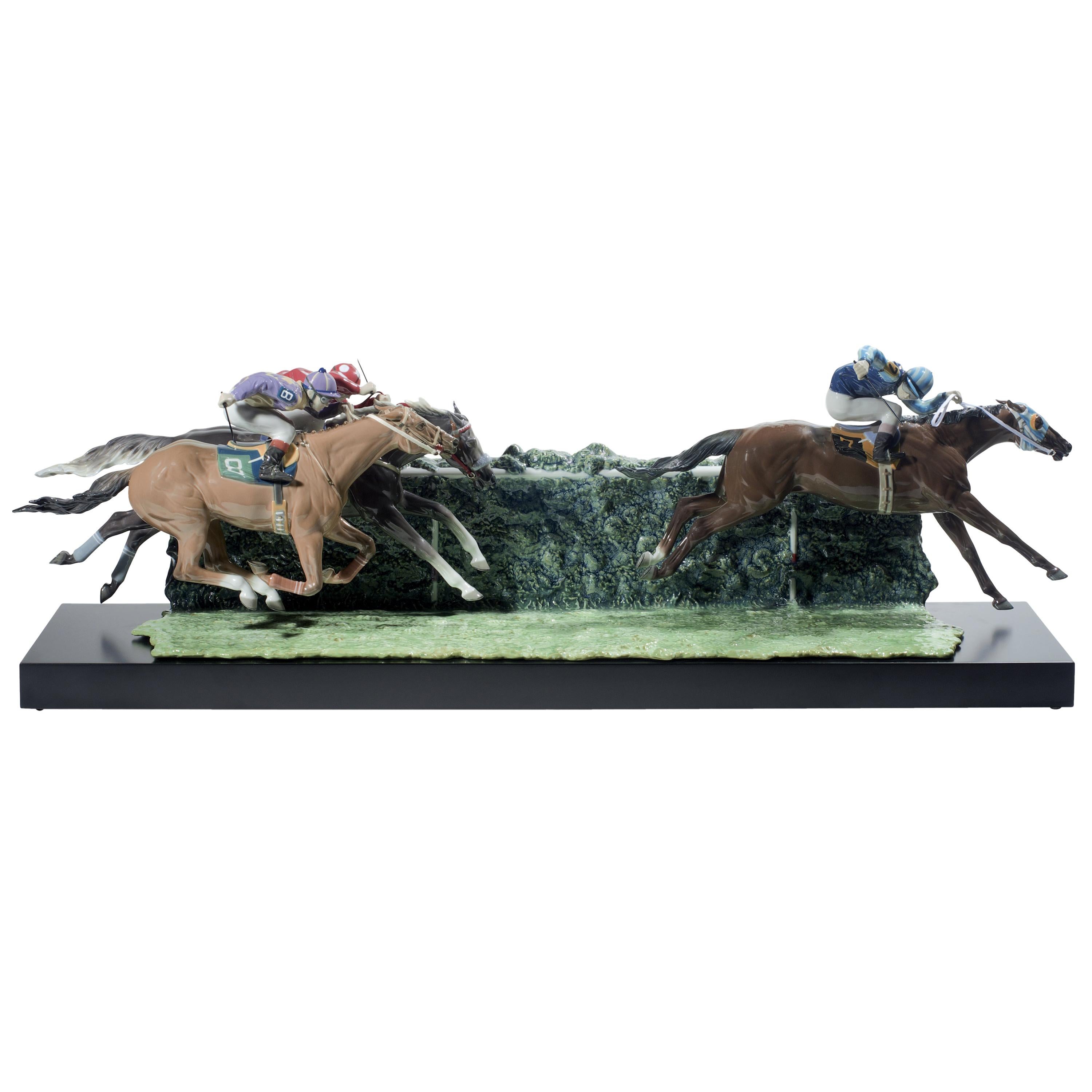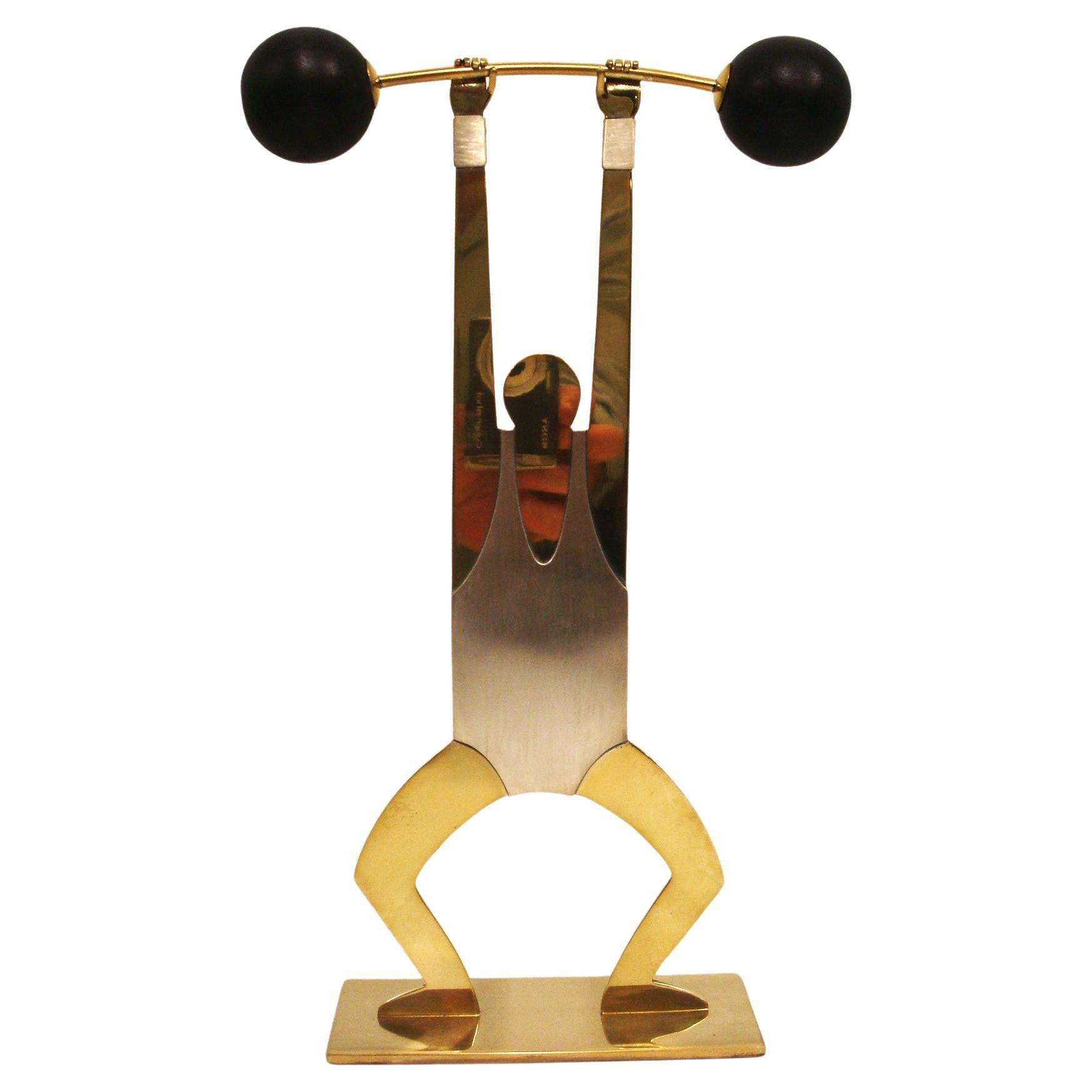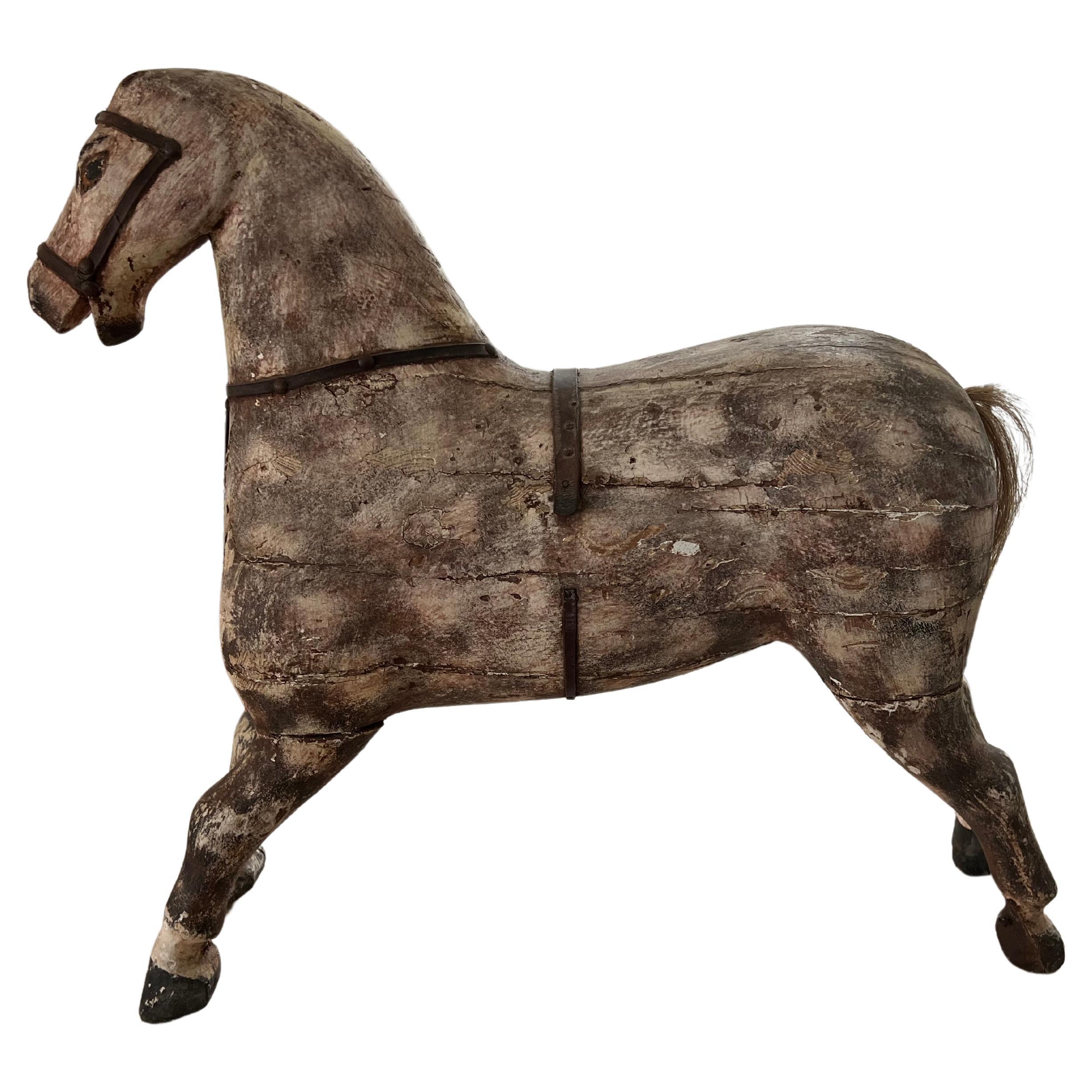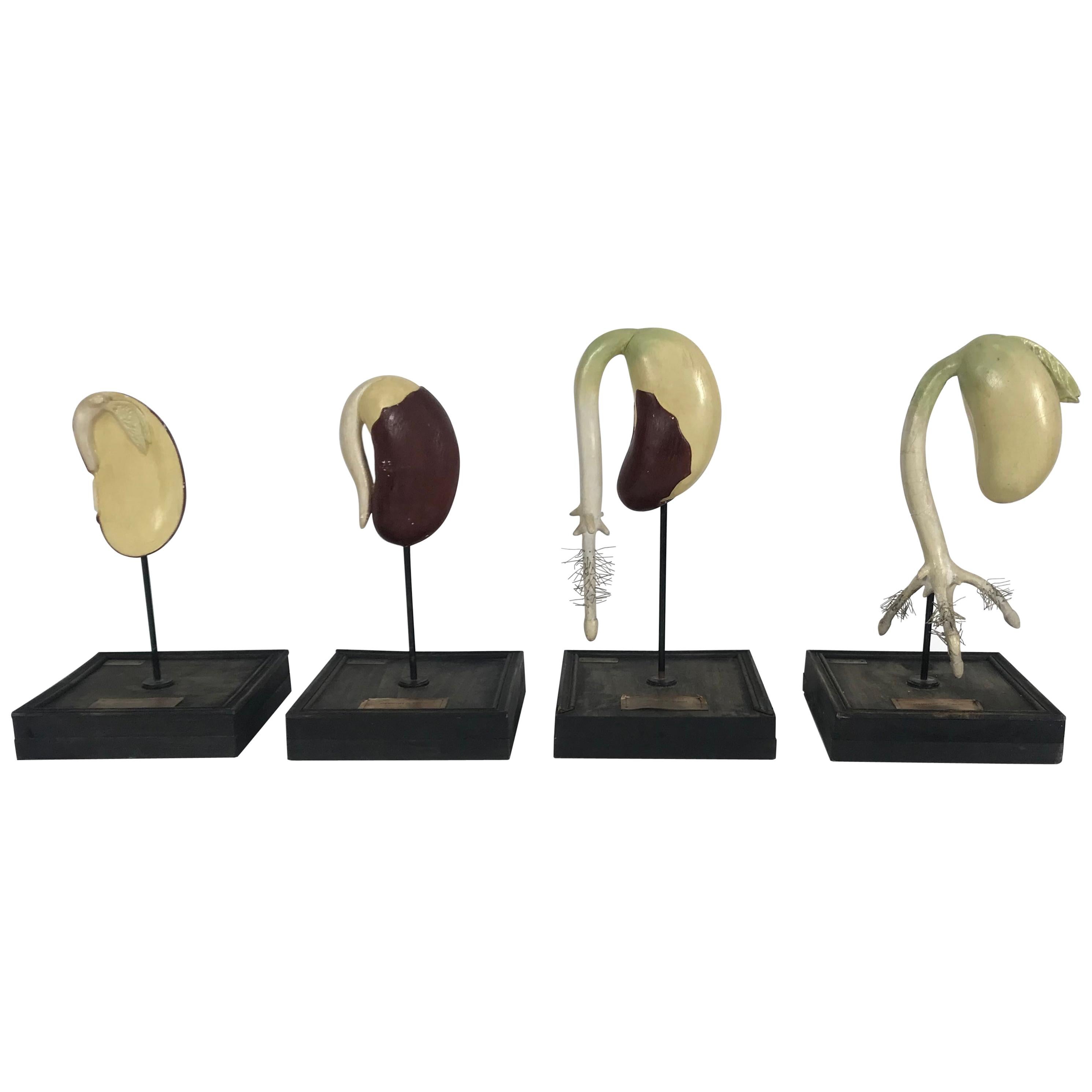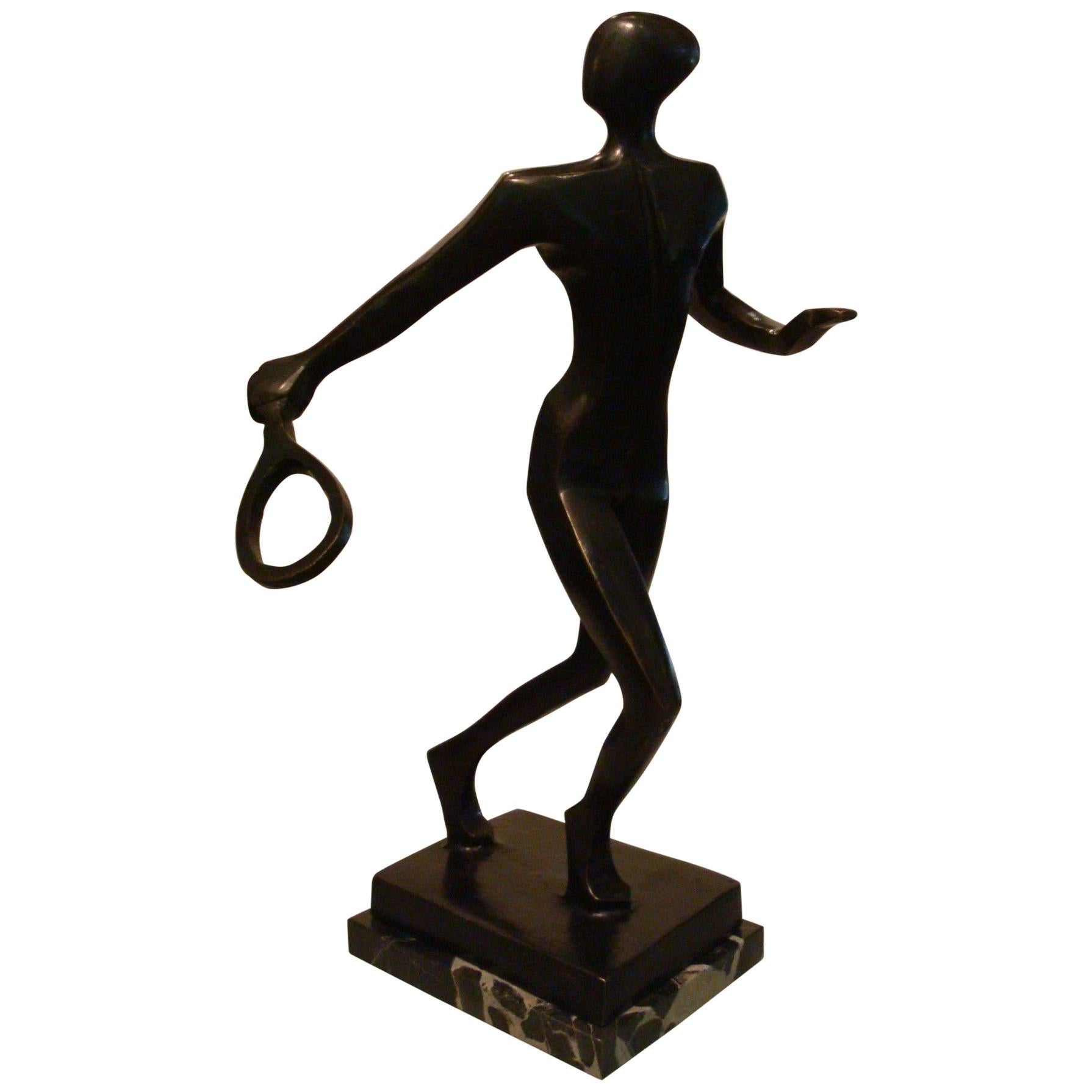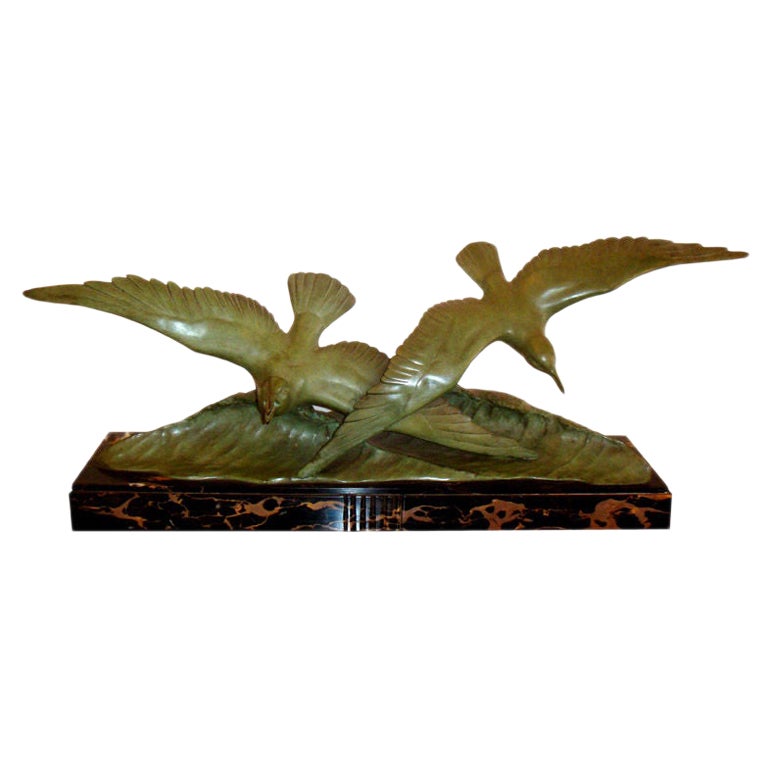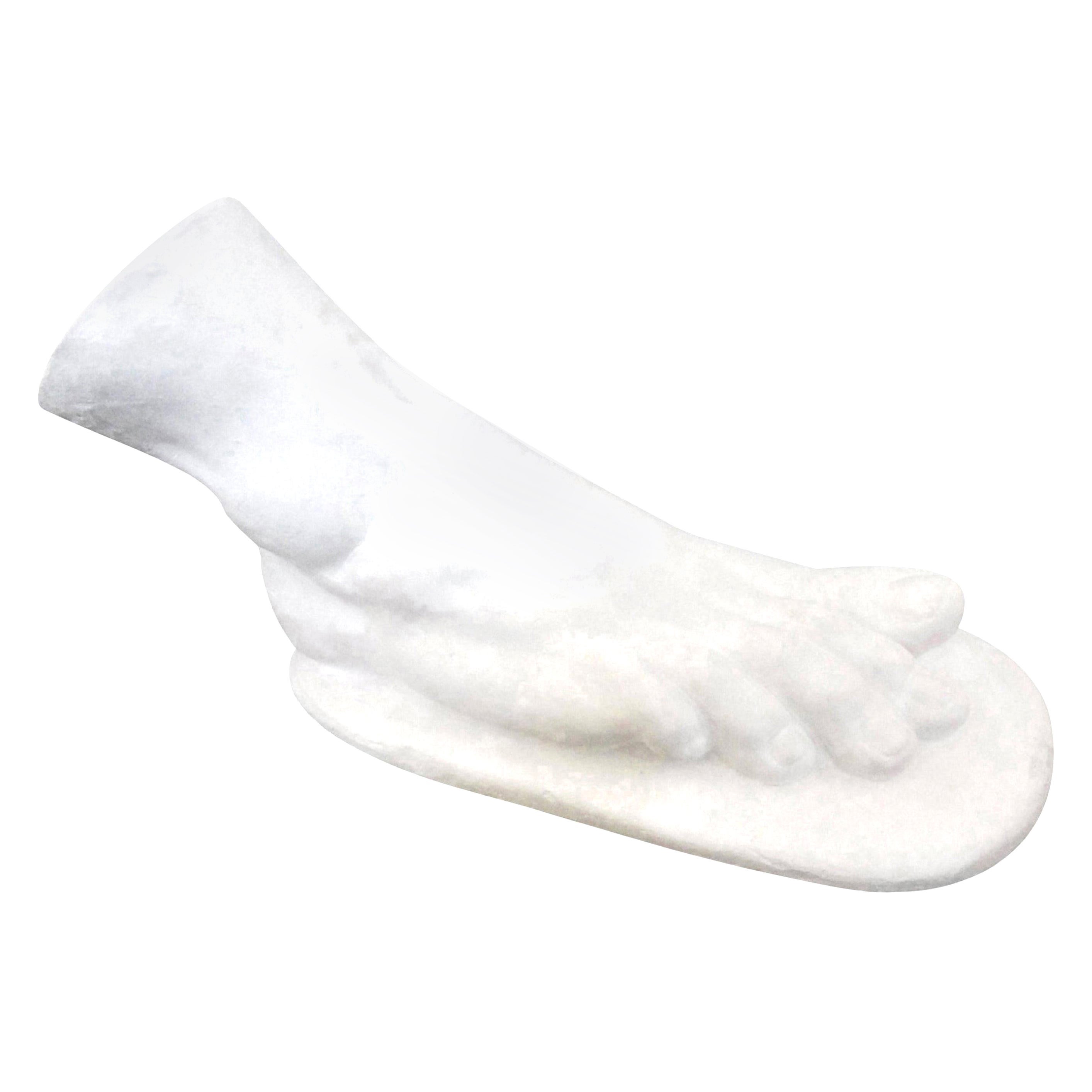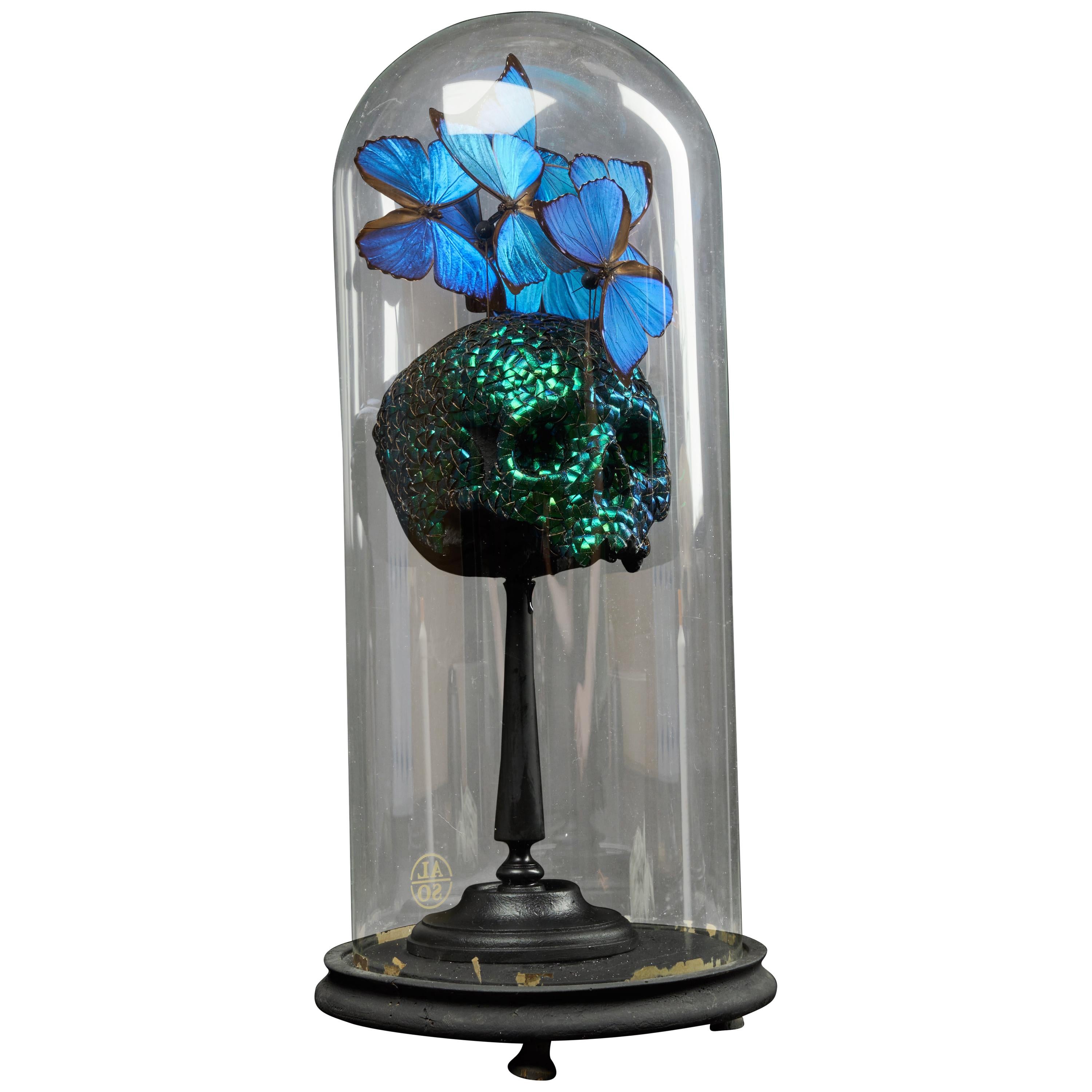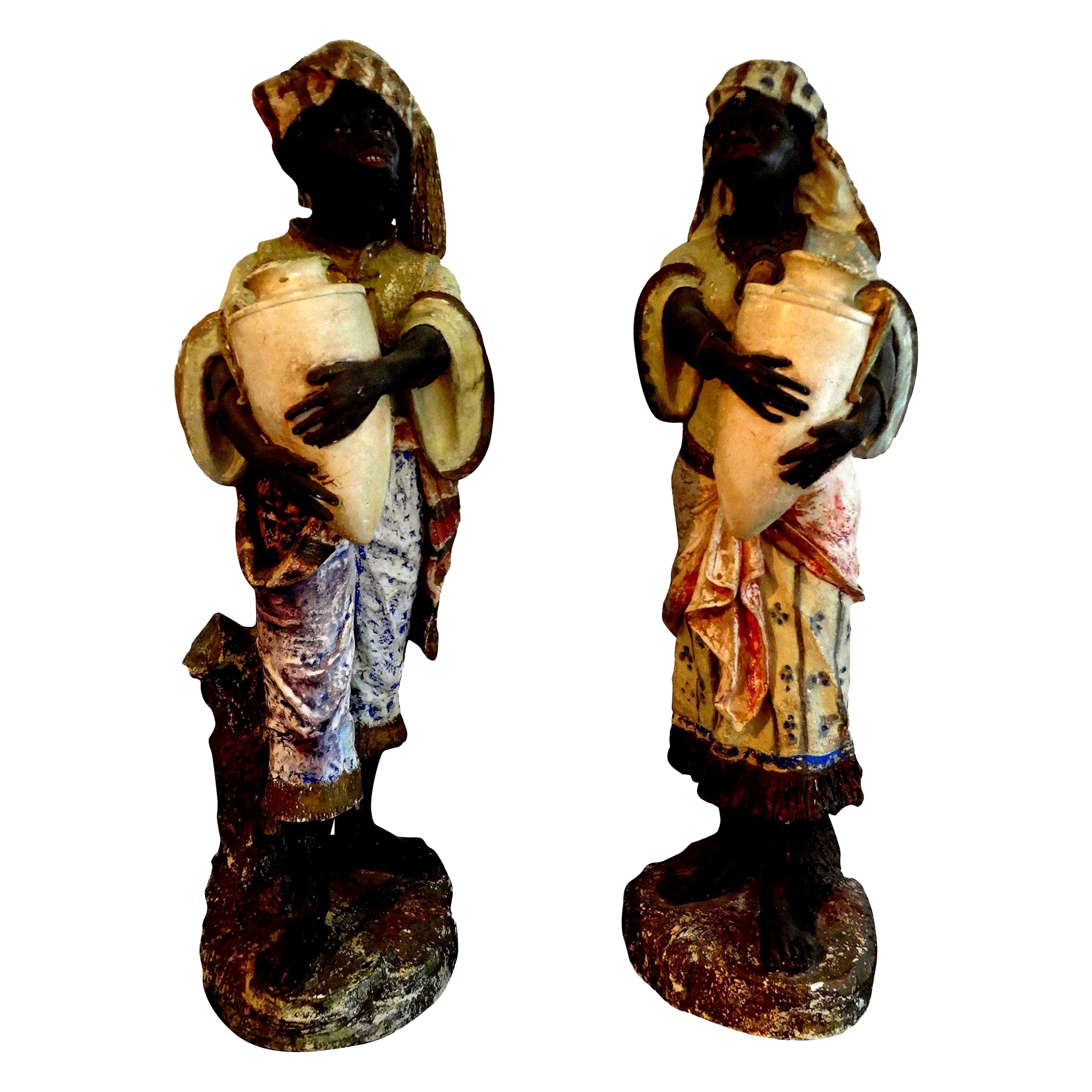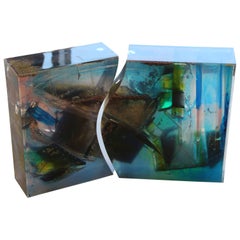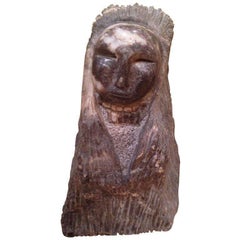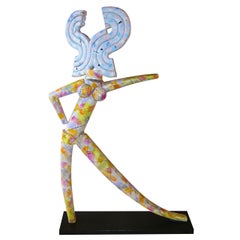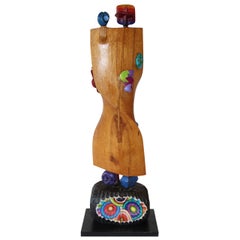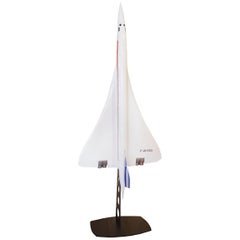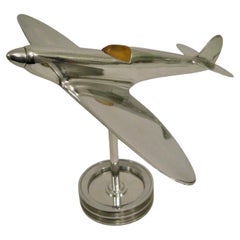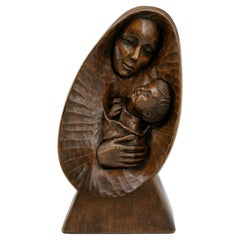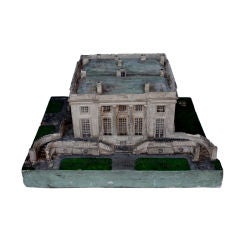
1930's WPA plaster/resin sculpture Petit Trianon at Versailles
View Similar Items
Want more images or videos?
Request additional images or videos from the seller
1 of 11
1930's WPA plaster/resin sculpture Petit Trianon at Versailles
About the Item
The following paragraph from a museum will explain the program which started in 1937:
The Pennsylvania Museum Extension Project
In 1935, “the first year of its existence the Work Projects Administration in Pennsylvania gained the distinction of originating the State-Wide Museum Extension type of project.” (26), and it is obvious from the surviving literature and artifacts made in Pennsylvania that it was the model emulated by many of the other state programs. In fact, Pennsylvania’s prominence in producing visual aids was made quite evident by its proud and boastful offer to willingly share “blue prints and other plans” (27) with any State MEP project that requested them. The PMEP fulfilled two distinct purposes during its existence. The first and most obvious propose was to “prepare… historical and educational objects and exhibits for use as visual aids in education.” (28) The second aim of the Project was to help “museums in their normal work and to organize and operate children’s museums in schools.” (29)
The objects were either distributed free of charge or sometime sold for a nominal fee to tax supported Pennsylvania schools, libraries, and museums. Teachers, librarians, and museum curators then used these “visual props” (often thought of as education-through-play) in the classroom as a way to bring alive the culturally diverse, global and rapidly modernizing world that the children of Pennsylvania and America were increasingly caught up it.
Mrs. Martha Colt was the Director of the State-Wide office of the PMEP from 1935-1943. The office was located in Harrisburg, the state capitol, at 46 North Cameron Street. Pennsylvania was divided into 16 Districts, and in 1939, there were seven production facilities, or work units, located throughout the state where the objects were manufactured: Pittsburgh, 2; South Langhorne, 9; Harrisburg, 22; Lancaster, 36; Norristown, 46; Willow Grove, 46W; and Philadelphia, 51. (30)
The smallest work unit employed as few as 25 workers while the largest provided jobs for as many as 1,000 workers. Each item listed in the catalog was preceded with a number that indicated where the object was produced and where it was on display. For example, Indian Dioramas were prefaced with the number 51, showing that the actual object was produced in Philadelphia. It let the prospective buyer know that the Philadelphia work unit was the location where the object could be examined or viewed before actually purchasing it. Officials who were in charge of buying PMEP objects were encouraged to visit the work units to make their selections, and for those who could not travel, a well-illustrated descriptive printed catalog was also readily available. However, all orders for catalog objects, no matter how they were selected, had to be placed with the central office in Harrisburg. That office then forwarded the orders to the various work units where the items were packed and shipped to the purchasing institution. (31)
District 15, the Pittsburgh office, was one of the most active in the state. It was sponsored by the Pittsburgh School Board and it occupied a five-story building at 3400 Forbes St., in the Oakland section of the city. In February of 1936 it:
“… employs 880 people, namely: sculptors, painters, architects, draftsmen, teachers, librarians, biologists, researchers, writers, designers, musicians, skilled tradesmen and hundreds of [other] workers.
Its supervisory staff is 100% college trained. Forty-five degrees held and twenty-three colleges and universities represented. Five foreign university graduates working.
The purpose of this Project is to extend and increase free museum advantages and release free visual education materials to public schools, institutions and buildings open to the public. Owing to the scattered population of some regions of Pennsylvania, the public school children of these districts are without advantages offered in larger cities by free museums and exhibitions. Miniature museum models and materials sent to these rural school and institutions will offer to some extent, the visual education now lacking. This which [sic] could be added to from time to time. The museum sets, miniature groups, and visual aids will be carefully made, with attention to proportion and detail. Bibliography and other printed information will accompany each set.
The Project is divided into five departments:
Architecture and Research
Art and Photograph
Marionette and Music
Sculpturing and Casting
Model Making (32)
In June of 1938, just three years after the WPA was created, the State of Pennsylvania employed 254,000 workers – approximately one tenth of the 2,767,000 employed throughout the 48 U.S. states and territories – and in any given year about 1,200 of them worked in the Pennsylvania Museum Extension Project. Indeed, by late 1939, the PMEP proclaimed to have produced approximately “one million articles primarily designed for visual education purposes in Pennsylvania’s tax-supported public schools, colleges and libraries.” The plays, handbooks, models, costume plates, maps, charts, and other objects were widely distributed throughout the state and were frequently copied or duplicated by other states.
Pennsylvania Museum Extension Project: The production phase of this project prepared charts, maps, posters, models, and small replicas of aircraft, ships, and machines for use as visual aids. In addition to its production activities the project also assisted publicly owned and operated museums in preserving, repairing, cataloging, and indexing exhibits and displays, provided guides and lecturers, preserved and reconstructed valuable museum collections, and prepared and arranged new models and exhibits.” (33)
The Pennsylvania Museum Extension Project “divided its activities into two general divisions: the production of visual aid devices; and docent service to existing museums. In the production departments of the project were to be found wood-workers, artists, painters, metal-workers, general artisans, in fact, any skilled craftsman whose services could be effectively used to produce the many items of educational and historical interest which were prepared for classroom and exhibition purposes.” (34)
“Closely allied to the education and recreation activities are the museum extension projects operating in Harrisburg, Pittsburgh, and Philadelphia. These projects are making complete sets of visual education material for distribution to public schools and institutions of the State. Included in this material are models of historical buildings, agricultural products, and costumes of the early settlers, which will be used in teaching history. There also are models of various industrial products and industrial activities, all of which can be tied in with the study of Pennsylvania geography and Pennsylvania industries. Educators everywhere have been eager to secure sets of these models. Already, request have been received from 104 school districts in Pennsylvania and 7 in New Jersey. There have been put to work on these projects experienced draftsmen, artists, handicraft workers, and the like who find in this work a new creative interest at the same time that they are contributing to the development of the next generation. These projects, producing aids to visual education, are the first of their kind in the entire country. However, through blue prints and other plans, the pioneer work of these projects can be made available to similar projects throughout the United States.” (35)
“From its inception, the WPA in Pennsylvania operated a program for unemployed artists who produced actual works of art, as well as demonstrating techniques of art media to the general public. With the coming of the war this emphasis was changed completely. It is revised form the program made a valuable contribution by designing and producing posters, brochures, murals, and ceramic insignia plaques for the Army, Navy, Marine Corps and Civilian Defense agencies. Camouflage solutions were created and assistance given in general camouflage work. Visual aids have proved their value in the training of military forces as well as in technical and vocational schools. A unit of the WPA organized for the purpose of assisting and indexing exhibits and displays, changed its work during the emergency to that of producing charts and maps, and small replicas of aircraft, ships and machines. The military and naval forces, as well as the technical schools, found these replicas of inestimable value to instruction and seemed unable to get enough of them.” (36)
“In Pennsylvania there was one State Office, located in Harrisburg. At the outset sixteen District Offices (see appendix below for desc. of the 16 Pa. Districts) were established. From 1938 on, that number was gradually reduced as follows: 16, 9, 7, 5, 4. The districts were approximately uniform in geographical area, in number of counties, and in the employable relief load. Exceptions were those districts comprising the cities of Philadelphia and Pittsburgh.” (37)
“From July 1, s935 to December 31, 1942 approximately 638,391 different persons were employed by the WPA at various times.” (38)
“The total amount of money expended for projects in Pennsylvania from July 7, 1935 through November 30, 1942 was #1,131,782.48. Of that sum $955,643,013.77 represented Federal expenditures, while sponsors’ contributions totaled #171,139,536.71.” (39)
As the United States was inexorably drawn into World War II, the work of the WPA and the Museum Extension Project gradually shifted to war-related duties. By the end of 1942, with the war in full swing, the WPA and its sub-agencies were discontinued. Legions of blue and white-collar WPA workers, who had honed their skills during the depression and the war, proudly survived the upheavals of the period. They went on to preside over the political and economic phenomenon that propelled the United States into the leading economic and military power of the last half of the twentieth century. The New Deal era was a unique period in American history. It endowed the nation with governmental traditions and social models that will be difficult for future generations to equal or surpass.
- Dimensions:Height: 8 in (20.32 cm)Width: 16.75 in (42.55 cm)Depth: 16 in (40.64 cm)
- Materials and Techniques:
- Place of Origin:
- Period:
- Date of Manufacture:1930's
- Condition:Lots of chips and paint loss, please see the detailed photos.
- Seller Location:Palm Springs, CA
- Reference Number:1stDibs: U10112983501287
About the Seller
5.0
Platinum Seller
Premium sellers with a 4.7+ rating and 24-hour response times
1stDibs seller since 2007
407 sales on 1stDibs
Authenticity Guarantee
In the unlikely event there’s an issue with an item’s authenticity, contact us within 1 year for a full refund. DetailsMoney-Back Guarantee
If your item is not as described, is damaged in transit, or does not arrive, contact us within 7 days for a full refund. Details24-Hour Cancellation
You have a 24-hour grace period in which to reconsider your purchase, with no questions asked.Vetted Professional Sellers
Our world-class sellers must adhere to strict standards for service and quality, maintaining the integrity of our listings.Price-Match Guarantee
If you find that a seller listed the same item for a lower price elsewhere, we’ll match it.Trusted Global Delivery
Our best-in-class carrier network provides specialized shipping options worldwide, including custom delivery.More From This Seller
View AllBijan Bahar Lucite and Epoxy Resin Sculpture Yin Yang
By Bijan Bahar
Located in Palm Springs, CA
A beautiful colorful sculpture by the noted artist Bijan Bahar. Bijan created this incredible sculpture by first creating a lucite box and then filling it with epoxy resin. before the resin hardened he filled it with found objects of color. after it dried he cut the sculpture artfully into two pieces. it was created in the mid 1990's and is signed and numbered 1/1. It is in good age appropriate condition with some crazing to the seams where the glue has crazed. There are some surface scratches and minor nicks as well. Not the bottom is sanded to a Frost finish by the artist.
A bio af the artist follows:
Museum Shows / Collections
Some of Commissions / Collections
Irvine Foundation, Los Angeles, CA
Mr. R. Lichtenstein, Int.
Riverside Museum of Art, Riverside, CA
Mr. Ali Sobhani, CA
Newport Harbor Art Museum, Newport Beach, CA
3700 Wilshire Blvd, LA, CA
Museum of Science and Industry, Los Angeles, CA Mrs. Rose Freeman, CA
Smithsonian Institute, Washington DC
Mr. and Mrs. Wiernik, PA
Las Vegas Museum of Art, Las Vegas, NV
Mr. Sam Francis, Int.
Baccarat Museum,cycling Paris, France
Pat Sajak gift
Laguna Beach Art Museum Metro Goldwyn-Mayer, CA
The Walker Art Museum, KS
Long Beach Children...
Category
1990s American Abstract Sculptures
Materials
Acrylic
$3,000 Sale Price
50% Off
Fabulous Hard Stone Carved Sculpture by Marcus Lyons
Located in Palm Springs, CA
This fabulous sculpture is by noted Palm Springs artist Marcus Lyons (b1949). The signature is indistinct but it is clearly his work. The subject matter is...
Category
20th Century American Folk Art Sculptures
Materials
Stone
$3,840 Sale Price
20% Off
Fred Schumm Lifesize Whimsical Painted Wood Sculpture of a Nude
By Fred Schumm
Located in Palm Springs, CA
A great whimsical colorfully painted lifesize wood sculpture of a nude. The base has been re-painted black. It is signed on the leg Schumm, 1995.
The artist's statement from a 2007 article follows;
Fred Schumm does not view life through rose-colored glasses.
He doesn't have to.
Schumm, Rowan University's artist-in-residence, is a former U.S. Marine who lived through some of the most horrific battles of World War II. He served at Peleliu -- two months of carnage on a tiny Pacific atoll where 12,000 perished - and then four long months on the bloodied isle of Okinawa.
Since then, Schumm, 82, has mostly tried to see life's beauty. It's sort of like how sunlight, warm but ordinary to the naked eye, is refracted into myriad, impossibly beautiful combinations of color when viewed through a kaleidoscope.
And, like sunlight, he finds art everywhere.
"Inspiration is all around but mostly I'm inspired by the ancients," Schumm said recently. "I love Prehistoric African carvings, the works of ancient Greeks, Japanese and Chinese. I especially love Eskimo work."
The celebrated sculptor loves Eskimo work so much he once hitchhiked from his home state of Colorado to Alaska just to see native carvings.
"I wanted to see the TOTEM poles," he said. "The Alaskan Indians were fantastic artists."
Schumm, artist-in-residence since 2003, works with various hardwoods, stone, even metals. A studio in which he works at Westby Hall has pieces in various stages of completion, from an eight-foot-tall, stainless steel sculpture he calls "Aviary" to a solid, six-foot log of black locust...
Category
Late 20th Century American Folk Art Sculptures
Whimsical Wood Sculpture by Noted NJ Artist Fred Schumm
By Fred Schumm
Located in Palm Springs, CA
A wonderful wood sculpture by the noted NJ artist Fred Scumm. It is inscribed near the base with no date. Likely from the late 1980s or early 1990s. Colorfu...
Category
Late 20th Century American Folk Art Sculptures
Arthur Gibbons Sculpture
By Arthur Gibbons
Located in Palm Springs, CA
A large signed and very heavy Arthur Gibbons metal sculpture. It is quite lovely. This sculpture can be exhibited outdoors as well as indoors.
A biography of the artist follows from his website:
Director: The Milton Avery Graduate School of the Arts at Bard college.
Professor of sculpture, Bard college.
Education:
B.A., Ohio Wesleyan University.
B.F.A., M.F.A., University of Pennsylvania.
Solo Exhibition:
Carlton Gallery, NYC, 1976.
Robert Freidus Gallery, NYC. 1977, 1979, 1980 and 1982.
Dayton Art Institute, Dayton, Ohio, 1978.
Grimaldis Gallery, Baltimore, 1986.
Lafayette College, Easton, PA, 1987.
André Emmerich Gallery, NYC, 1984, 1985, 1986, 1988, 1990 and 1992.
Art Academy of Cincinnati, 2001.
Incident Report, Hudson, NY, 2007 and 2014.
Articles/Reviews:
New York Times.
Village voice.
Art news.
Arts magazine.
International sculpture.
Group exhibitions:
Artist space, NYC.
Davis and Long Company, NYC.
Rosa Esman Gallery, NYC.
Union College.
Kingston Biennial.
Art OMI.
Guild Hall, East Hampton.
Storm King Art Center, Mountainville.
Neuberger Museum of Art, SUNY Purchase.
Hofstra University.
Center for Curatorial Studies, Bard College.
Diane Brown...
Category
Late 20th Century American Sculptures
Materials
Iron
$15,000
Inuit Salmon Sculpture
Located in Palm Springs, CA
A lovely marble stone sculpture of intertwined salmon, likely an Inuit artist. It is mounted on a rod and black marble base so that it swivels. One corner of the bottom of the black ...
Category
20th Century American Animal Sculptures
Materials
Stone
$1,600 Sale Price
66% Off
You May Also Like
Concorde Model Sculpture in Resin Scale 1/25
Located in Paris, FR
Sculpture Concorde model in high quality resin,
scale 1/25. Vertical base in blackened steel.
Exceptional piece. Made in France.
Base: L 71 x D 55cm.
Model: Wingspan 100cm x heig...
Category
21st Century and Contemporary French Figurative Sculptures
Materials
Resin
Supermarine Spitfire Airplane Model, Desk Sculpture, U.K. 1930´s
Located in Buenos Aires, Olivos
Supermarine Spitfire Airplane Model, desk / counters / sculpture.
Made in United Kindom 1930´s. Perfect Gift for any pilot or aviation fan.
The Supermarine Spitfire is a British ...
Category
Mid-20th Century British Mid-Century Modern Mounted Objects
Materials
Aluminum
French Art Deco Unique Mother & Child Sculpture, 1930s
Located in Saint-Amans-des-Cots, FR
Unique Hand-made. French Art Deco Mother & Child Statue by René Mercier, France, 1930s. This exceptional Art Deco piece, crafted by the talented French sculptor René Mercier in the 1...
Category
Vintage 1930s French Art Deco Figurative Sculptures
Materials
Wood
Lladró at the Derby Horses Sculpture by Ernest Massuet. Limited Edition.
By Ernest Massuet, Lladro
Located in New York City, NY
Glossy porcelain sculpture racing in the racetrack limited series represented by three horses with jockey of intense red and blue colors, combination of different glazes. Base includ...
Category
21st Century and Contemporary Spanish Modern Animal Sculptures
Materials
Porcelain
Weightlifter Hagenauer Mid-Century / Art Deco Sculpture, Austria, 1930
By Werkstätte Hagenauer Wien
Located in Buenos Aires, Olivos
Art Deco / Vintage liftweight sculpture.
Weightlifter Hagenauer mid-century / Art Deco Sculpture - Austria 1930
Franz Hagenauer sculpture of a weightlifte...
Category
Mid-20th Century Austrian Mid-Century Modern Figurative Sculptures
Materials
Brass
1930s Austrian Horse Toy
By Craft and Folk Art Museum
Located in Sag Harbor, NY
Beautiful 1930s Austrian horse toy. Wonderful patina.
Category
Vintage 1920s Austrian Folk Art Toys and Dolls
Materials
Bentwood
$2,800
Recently Viewed
View AllMore Ways To Browse
Trianon Wood
Marine Charts
Metal Sculpture Room Divider
Petit Architectural
Relief Map
Travel Agency Posters
Petit Trianon
Army Navy Poster
Cameron Collection Furniture
Naval Model Model
Aircraft Sculpture
Miniature Libraries
Blue Willow Plates
Architectural Plaster Model
United States Marine Corps
Folk Art Diorama
Blue Willow Set
Ship Diorama
